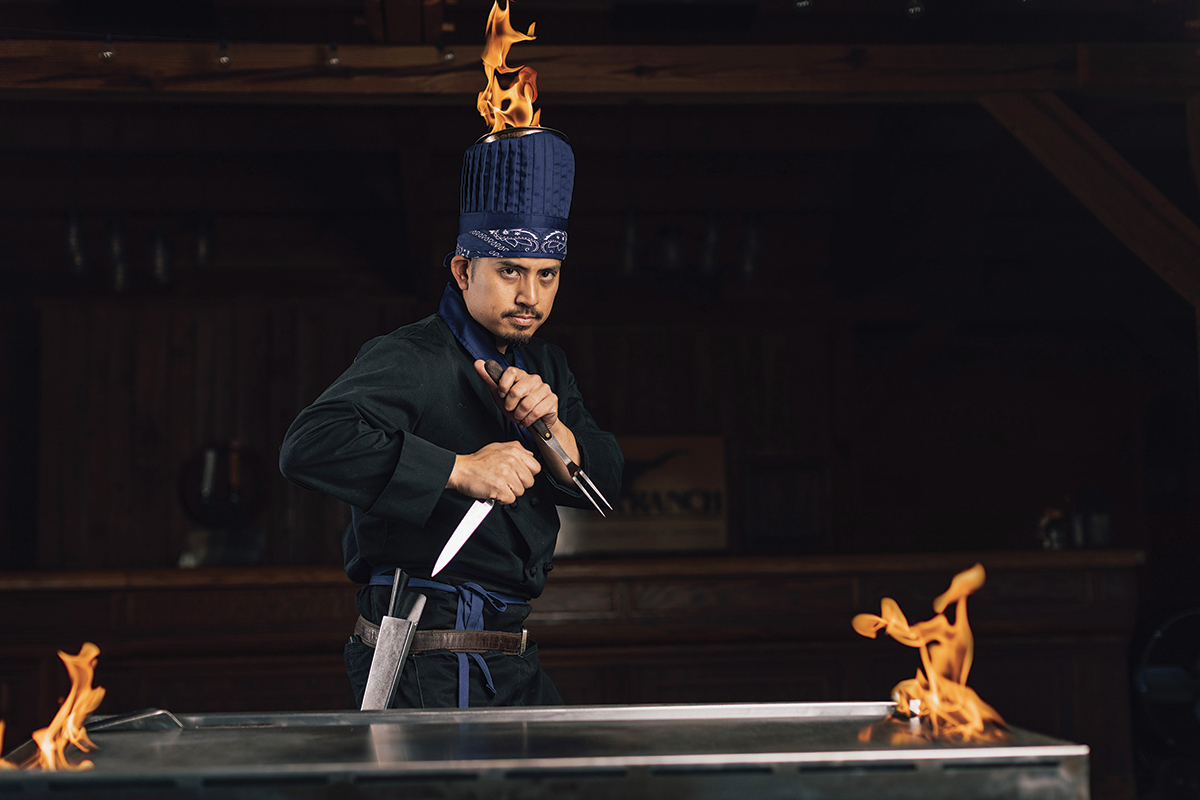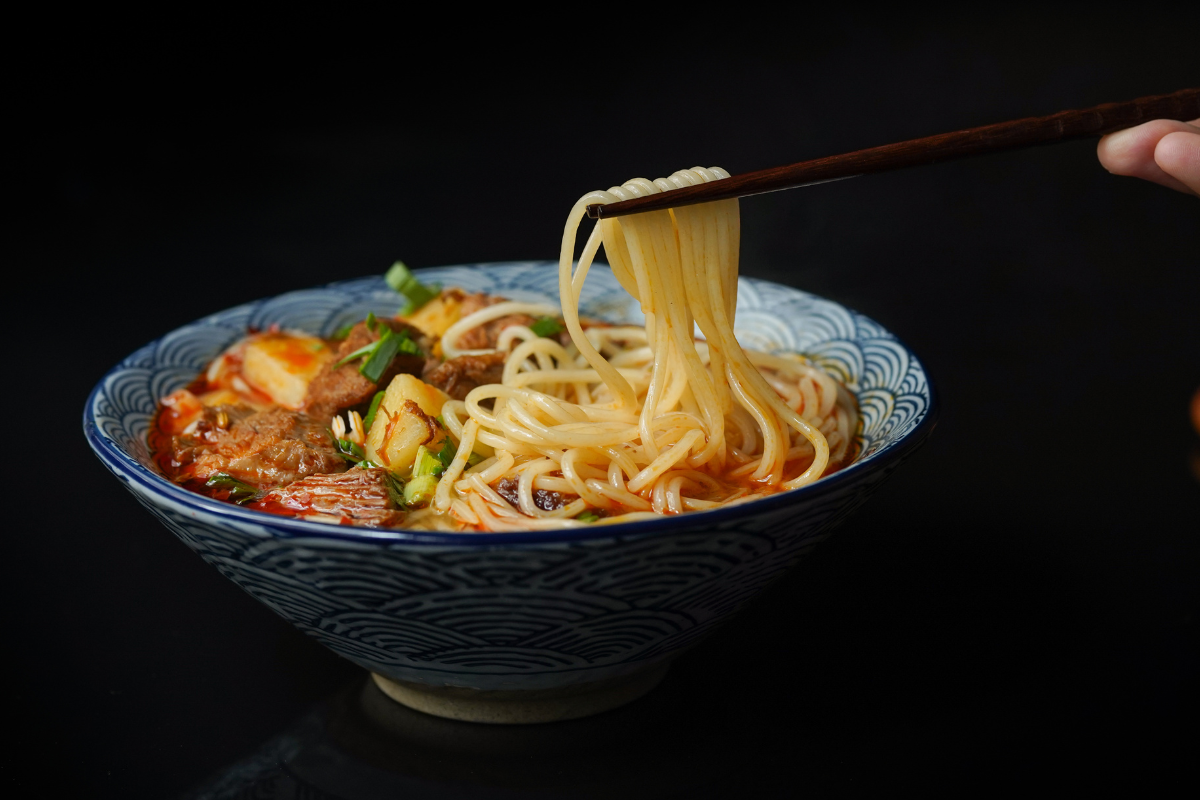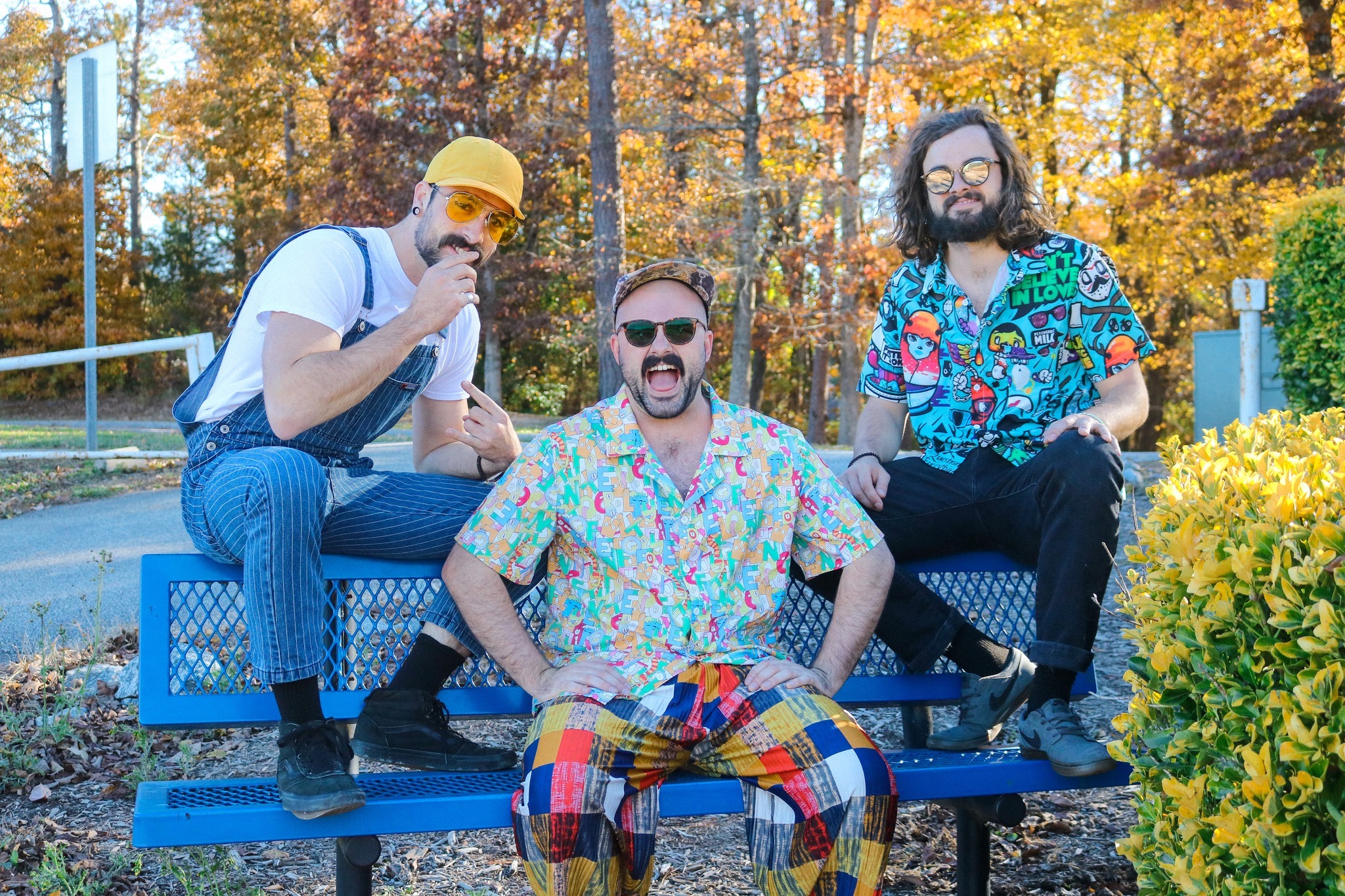Mobile caterer aims for real flavor amid the razzle-dazzle

IN CHARGE AND ENFLAMED
Phi Nguyen, aka Chef Blue
Photo by Jack Robert
Most of us are familiar with the concept of Hibachi — the extravagant show of table-side cooking common in many Japanese-themed restaurants. We know the tricks: the onion volcano, the juggling of spatulas, the slicing through an egg in mid air, the exhilarating fire play.
But few people know where the tradition comes from, far less the stories of those mastering all that theater.
Teppanyaki, the more correct term, refers to both the type of grill used (a “teppan”) and the aspect of cooking for an audience. “Hibachi is American-style Teppanyaki. It’s loud, it’s fun, it’s a show … it’s throwing eggs around and fire volcanoes, right?” laughs Phi Nguyen of Hendersonville, who styles himself “Chef Blue.”
These days, Nguyen runs Chef Blue Private Hibachi, a mobile catering company. Alone or with an assistant, depending on the size of the group, he cooks at regional clients’ homes for small gatherings — no more than 20 guests. (Recent audiences have included a local veterans’ unit and the traveling Venardos Circus.)
But over the course of his career, working variously with Vietnamese, Taiwanese, and Japanese chefs in the U.S. and around the world, Nguyen — who is Vietnamese and Chinese — learned the difference between the largely synonymous Teppanyaki and American Hibachi better than most chefs ever have the chance to.
Teppanyaki was a style of cooking developed in 1950s Japan after WWII at the restaurant Misono, as a way to appeal to tourists unsure of Japanese cuisine. It was simplified, Westernized food for wary travelers with the comfort of a table-side chef. Wrestler-turned-entrepreneur Rocky Aoki introduced the concept to American audiences in the ’60s, when he opened the famed Benihana. But Aoki put the focus on the razzle-dazzle of the show, simplifying the cooking even further to appeal to American sensibilities. He also started calling it Hibachi — which means “fire bowl” — instead of Teppanyaki, and the concept spread through the country like an oil fire on the teppan.

The show is spectacular, but the experience is intimate.
Photo by Jack Robert
Nguyen started working in a Hibachi restaurant called Ichiban as a summer job when he enlisted in the National Guard in Virginia. “I was working in my father’s nail salon at a very young age, and I hated it. So one summer I woke up one morning and applied to work at a restaurant where a friend of mine worked. A few weeks into that, I hated being a server because the chef is always telling you what to do — so I decided I wanted to be a chef.”
His boss — or as Nguyen calls him, his sensei — told him he’d teach him how to cook, but he started him in the dish pit, made him sweep the floors and work his way up the ranks for a year. “When he put me on as a dishwasher, he also bought me my fork and my spatula that I still have and use to this day,” he says. And every day, when Nguyen would get home after work, he’d practice tricks with that spatula and fork. “I wanted to be ready when he actually taught me something … when he finally taught me to cook, my show was already better than all of the other chefs in the restaurant, because I’d been practicing every day. I wanted to be good so badly.”
Around that time, Nguyen also started posting videos of his show on a platform that was new at the time — YouTube. Those videos caught the attention of a Teppanyaki restaurant called Ginza Gold in Rome, and they reached out to him about the opportunity to work there. He pounced.
“It was a huge learning curve for me. I was such a hothead and had the biggest attitude when I got over there,” he recalls. “As far as the show went, I was good. But it isn’t just about juggling your tools, it’s about the food, and my cooking was crap compared to what those guys were doing. I was so humbled, and I am so thankful for that experience. Their food was superb. It was such a blessing to learn the true art of Teppanyaki.”
He explains that American Hibachi “leans on Teriyaki sauces and lightly seasoned meats smothered in creamy Yum Yum sauce, [while] Teppanyaki features subtle, carefully seasoned and delicately cooked foods, focusing much more deeply on the flavor.”
Since his stint in Italy, Nguyen has cooked as Chef Blue in Louisiana, Switzerland, Texas, California, Australia, Indiana, and Michigan, even appearing with his brother Cuong — aka Chef Green — on the Rachael Ray Show in 2010.
But when their father, living in Hendersonville, fell ill in late 2019, Nguyen came to town to help tend to the family business. It was in the height of the pandemic that the idea struck him to bring the Hibachi/Teppanyaki experience to people’s homes. And now, he’s often booked up months in advance.
“What I try to do now is bring both worlds together. I try to do the show and give people what they want,” says Nguyen. “People here want that experience … they want to have a good time.
“But at the same time, I want to keep the quality of the food up to that Teppanyaki standard.”
Chef Blue Private Hibachi, Hendersonville. For more information, call 540-688-9404 or see hibachichefblue.com.



